2-chloroacetanilide

2-chloroacetanilide structure
|
Common Name | 2-chloroacetanilide | ||
|---|---|---|---|---|
| CAS Number | 587-65-5 | Molecular Weight | 169.60800 | |
| Density | 1.266 g/cm3 | Boiling Point | 340ºC at 760 mmHg | |
| Molecular Formula | C8H8ClNO | Melting Point | 136-139 °C(lit.) | |
| MSDS | Chinese USA | Flash Point | 159.5ºC | |
| Symbol |

GHS07 |
Signal Word | Warning | |
| Name | 2-chloro-N-phenylacetamide |
|---|---|
| Synonym | More Synonyms |
| Density | 1.266 g/cm3 |
|---|---|
| Boiling Point | 340ºC at 760 mmHg |
| Melting Point | 136-139 °C(lit.) |
| Molecular Formula | C8H8ClNO |
| Molecular Weight | 169.60800 |
| Flash Point | 159.5ºC |
| Exact Mass | 169.02900 |
| PSA | 29.10000 |
| LogP | 1.93690 |
|
Material Safety Data Sheet
Section1. Identification of the substance Product Name: 2-Chloroacetanilide Synonyms: Section2. Hazards identification Harmful by inhalation, in contact with skin, and if swallowed. H315:Causes skin irritation
H319:Causes serious eye irritation H335:May cause respiratory irritation P261:Avoid breathing dust/fume/gas/mist/vapours/spray P305+P351+P338: IF IN EYES: Rinse cautiously with water for several minutes. Remove contact lenses if present and easy to do – continue rinsing Section3. Composition/information on ingredients. Ingredient name:2-Chloroacetanilide CAS number:587-65-5 Section4. First aid measures Skin contact:Immediately wash skin with copious amounts of water for at least 15 minutes while removing contaminated clothing and shoes. If irritation persists, seek medical attention. Immediately wash skin with copious amounts of water for at least 15 minutes. Assure adequate Eye contact: flushing of the eyes by separating the eyelids with fingers. If irritation persists, seek medical attention. Inhalation:Remove to fresh air. In severe cases or if symptoms persist, seek medical attention. Ingestion:Wash out mouth with copious amounts of water for at least 15 minutes. Seek medical attention. Section5. Fire fighting measures In the event of a fire involving this material, alone or in combination with other materials, use dry powder or carbon dioxide extinguishers. Protective clothing and self-contained breathing apparatus should be worn. Section6. Accidental release measures Personal precautions: Wear suitable personal protective equipment which performs satisfactorily and meets local/state/national standards. Respiratory precaution:Wear approved mask/respirator Hand precaution:Wear suitable gloves/gauntlets Skin protection:Wear suitable protective clothing Eye protection:Wear suitable eye protection Methods for cleaning up: Mix with sand or similar inert absorbent material, sweep up and keep in a tightly closed container for disposal. See section 12. Environmental precautions: Do not allow material to enter drains or water courses. Section7. Handling and storage Handling:This product should be handled only by, or under the close supervision of, those properly qualified in the handling and use of potentially hazardous chemicals, who should take into account the fire, health and chemical hazard data given on this sheet. Storage:Store in closed vessels, refrigerated. Section8. Exposure Controls / Personal protection Engineering Controls: Use only in a chemical fume hood. Personal protective equipment: Wear laboratory clothing, chemical-resistant gloves and safety goggles. General hydiene measures: Wash thoroughly after handling. Wash contaminated clothing before reuse. Section9. Physical and chemical properties Appearance:Not specified No data Boiling point: Melting point:No data Flash point:No data Density:No data Molecular formula: C8H8ClNO Molecular weight: 169.6 Section10. Stability and reactivity Conditions to avoid: Heat, flames and sparks. Materials to avoid: Oxidizing agents. Possible hazardous combustion products: Carbon monoxide, nitrogen oxides, hydrogen chloride. Section11. Toxicological information No data. Section12. Ecological information No data. Section13. Disposal consideration Arrange disposal as special waste, by licensed disposal company, in consultation with local waste disposal authority, in accordance with national and regional regulations. Section14. Transportation information Non-harzardous for air and ground transportation. Section15. Regulatory information No chemicals in this material are subject to the reporting requirements of SARA Title III, Section 302, or have known CAS numbers that exceed the threshold reporting levels established by SARA Title III, Section 313. SECTION 16 - ADDITIONAL INFORMATION N/A |
CHEMICAL IDENTIFICATION
HEALTH HAZARD DATAACUTE TOXICITY DATA
|
| Symbol |

GHS07 |
|---|---|
| Signal Word | Warning |
| Hazard Statements | H315-H319-H335 |
| Precautionary Statements | P261-P305 + P351 + P338 |
| Personal Protective Equipment | dust mask type N95 (US);Eyeshields;Gloves |
| Hazard Codes | Xi |
| Risk Phrases | R36/37/38 |
| Safety Phrases | S26-S36 |
| RIDADR | NONH for all modes of transport |
| WGK Germany | 3 |
| RTECS | AE1000000 |
| Precursor 9 | |
|---|---|
| DownStream 10 | |
|
Risk assessment of pesticides detected in surface water of the Alqueva reservoir (Guadiana basin, southern of Portugal).
Sci. Total Environ. 488-489 , 208-19, (2014) The purpose of this study was to evaluate the potential impact of the pesticides detected in the Alqueva reservoir (Guadiana Basin, South Iberian Peninsula) on the aquatic organisms belonging to this ... |
|
|
Biotransformation of monochloroanilines in guppy, Poecilia reticulata.
Xenobiotica 24(1) , 59-69, (1994) 1. Guppies (Poecilia reticulata) were exposed for 96 h to 4-chloroaniline (4CA), 3-chloroaniline (3CA) and 2-chloroaniline (2CA) in a static exposure system. 4-Chloroacetanilide (N4CA), 3-chloroacetan... |
|
|
Determination of sulfonic acid degradates of chloroacetanilide and chloroacetamide herbicides in groundwater by LC/MS/MS.
Anal. Chem. 70(13) , 2699-703, (1998) An analytical method is presented which permits qualitative and quantitative analysis of sulfonic acid degradates of three chloroacetanilide herbicides (acetochlor, alachlor, and metolachlor) and one ... |
| Chloroacetanilide |
| N-(2-chloroacetyl)aniline |
| N-chloroacetylaniline |
| N-phenyl-2-chloroacetamide |
| Acetamide,2-chloro-N-phenyl |
| Acetanilide,2-chloro |
| 2-Chloroacetanilide |
| MFCD00018887 |
| EINECS 209-604-0 |
| N-Phenylchloroacetamide |
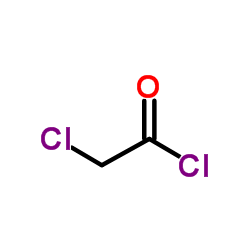 CAS#:79-04-9
CAS#:79-04-9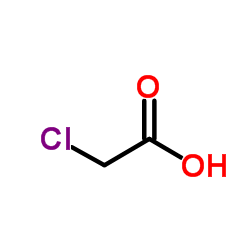 CAS#:79-11-8
CAS#:79-11-8 CAS#:3768-55-6
CAS#:3768-55-6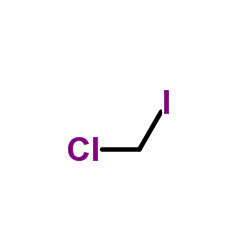 CAS#:593-71-5
CAS#:593-71-5 CAS#:103-71-9
CAS#:103-71-9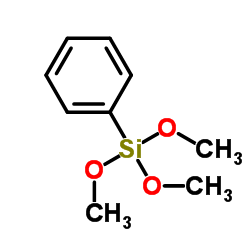 CAS#:2996-92-1
CAS#:2996-92-1 CAS#:79-07-2
CAS#:79-07-2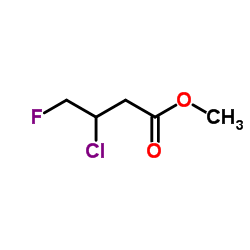 CAS#:541-88-8
CAS#:541-88-8 CAS#:105-39-5
CAS#:105-39-5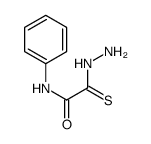 CAS#:105736-40-1
CAS#:105736-40-1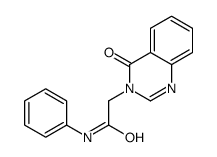 CAS#:108086-38-0
CAS#:108086-38-0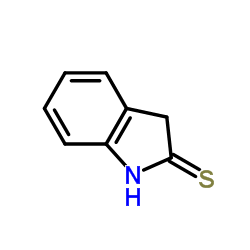 CAS#:496-30-0
CAS#:496-30-0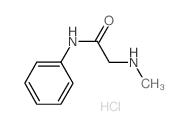 CAS#:60565-45-9
CAS#:60565-45-9 CAS#:496-15-1
CAS#:496-15-1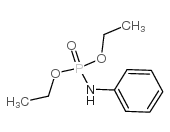 CAS#:1445-38-1
CAS#:1445-38-1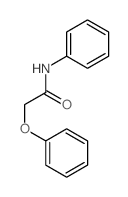 CAS#:18705-01-6
CAS#:18705-01-6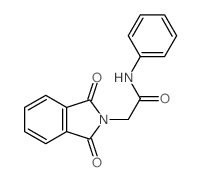 CAS#:2017-94-9
CAS#:2017-94-9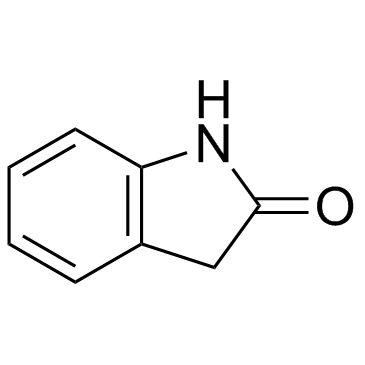 CAS#:59-48-3
CAS#:59-48-3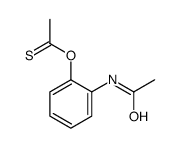 CAS#:28045-65-0
CAS#:28045-65-0
